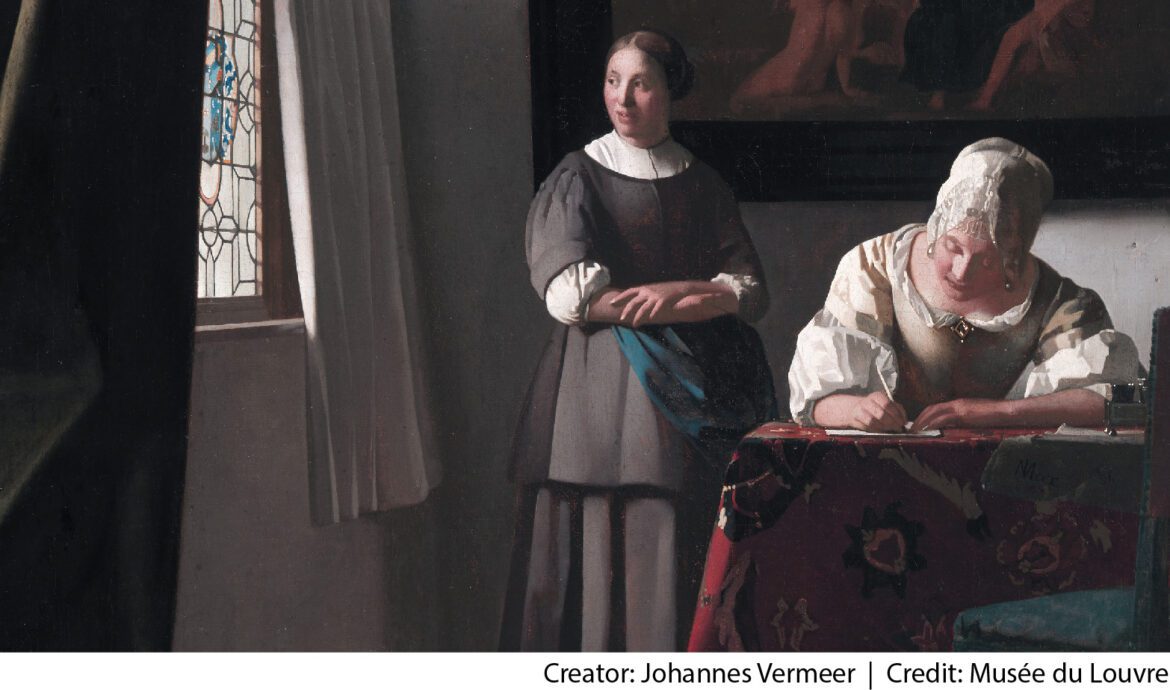The Rijksmuseum in Amsterdam exhibited the largest Johannes Vermeer (1632-1675) show ever, hosting 28 of his 37 known paintings from February 10 to June 4, 2023. The exhibition drew 650,000 visitors over 16 weeks and borrowed pieces from Europe and the United States to accompany the museum’s own four Vermeers. The exhibit highlighted the overwhelming presence of women in his work, as he often depicted them as the central subjects of his paintings, emphasizing their subtle beauty and domestic roles. These portrayals provide a glimpse into women’s lives during the Dutch Golden Age and contribute to the enduring legacy of Vermeer’s art. While the exhibit is now closed, you can experience a deconstructed exhibition of the 10 Vermeers housed in the United States and appreciate the role of women in his art at your own pace.
Johannes Vermeer is considered one of the great Dutch masters of the art canon, along with Rembrandt van Rijn, Frans Hals, and Vincent van Gogh. However, there are critical differences between Vermeer as an artist and historical figure and the other masters. Vermeer only recently rose to prominence in the 19th century, and because of his smaller portfolio of about 45 paintings (37 are known today), he was less well known during his own time than one might think. Vermeer sold his works to a handful of wealthy patrons in Delft, his hometown, never breaking into the larger art market in Northern Europe as his fellow Dutch masters had. His smaller circle of patrons did not stop his pieces from commanding a high price during his short life.
Vermeer was an artist by night as he inherited his father’s art dealing business after his death, leaving his own art as more of a side job. Though there is no evidence that Vermeer studied with a teacher, he was vastly interested in the scientific properties of light and color and became a master at realistic Dutch interior scenes.
In his 37 known paintings, women appear 46 times, mostly in central roles, while men only appear 14 times in supporting roles. Because art historians have limited information on the life and work of Vermeer, all of the women painted are unidentified, though many people believe them to be members of his family. There has also been much speculation about Vermeer being a womanizer, but there are more evident reasons for the appearance of so many women. Seven of Vermeer’s eleven children were daughters, and because girls weren’t educated until they were older (if unmarried), he had them at his disposal to use as models in his work. This is apparent in many of his paintings, as there is often a consistency in facial features among the women painted, and the ages shown would be close to those of his daughters. His wife, Catharina, also most likely posed for the artist. However, art historians are not sure the women in these paintings are his family members, and it is widely accepted that none of the pieces Vermeer produced were intended as portraits.
Furthermore, Vermeer’s overwhelming genre was Dutch interior painting, and Dutch culture placed women at the center of the home. While they held considerable responsibility outside the home, working as tradeswomen and enjoying legal rights, it’s not surprising that Vermeer’s interiors would depict mainly women.
In Vermeer’s scenes, the home is not only for homemaking but for intellect and introspection. As Dutch elite culture was evolving, the new ideal for women was one of education and virtue, where women enjoyed music-making and literature while displaying their high moral status. This is evident in pieces housed in the United States, such as Young Woman Seated at a Virginal (Leiden Collection, New York) and A Lady Writing (The National Gallery, Washington).Vermeer also often placed objects alongside his women that suggested the scene and the actor was “rich in moral allegory,” most pronounced in Woman Holding a Balance (The National Gallery, Washington) and Allegory of the Catholic Faith (The Metropolitan Museum of Art, New York).
Experience the true masterpieces of Vermeer on your next visit to New York City or Washington, and immerse yourself in the subtle beauty and appreciation of his subjects with newfound knowledge of the mysterious women of Vermeer.
The National Gallery, Washington, D.C.
A Lady Writing, 1664-67
Girl with a Flute, 1664-67
Girl with the Red Hat, 1664-67
Woman Holding a Balance, 1662-64
The Metropolitan Museum of Art, New York
Allegory of the Catholic Faith, 1670-74
Young Woman with a Lute, 1662-64
The Frick Collection, New York
Girl Interrupted at Her Music, 1659-61
Mistress and Maid, 1665-67
Officer and Laughing Girl, 1657-58
The Leiden Collection, New York
Young Woman Seated at a Virginal, 1670-72

